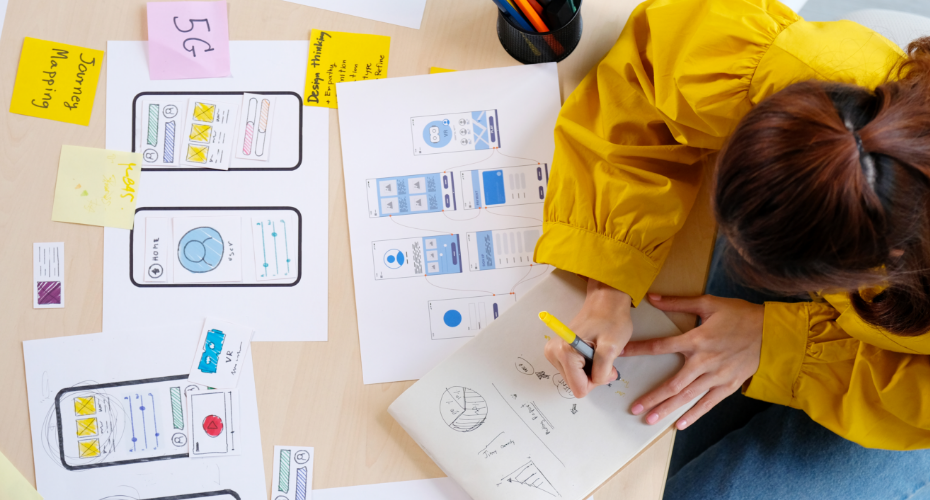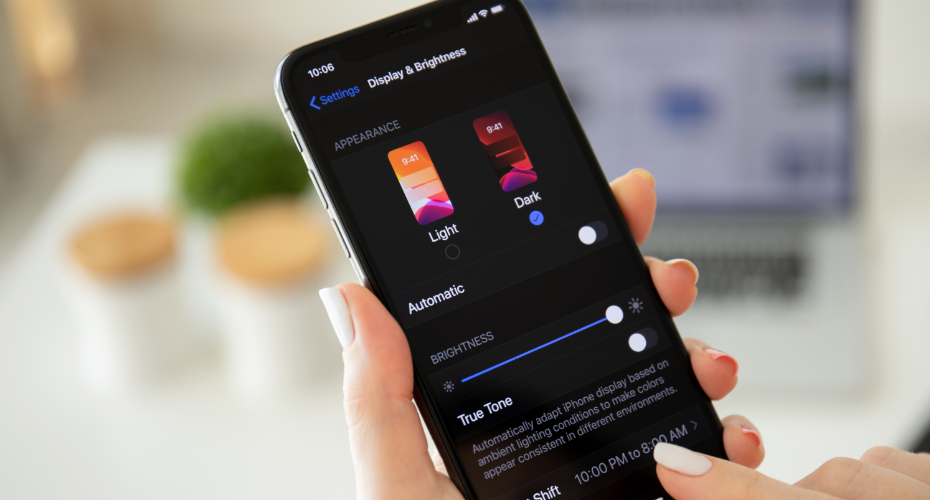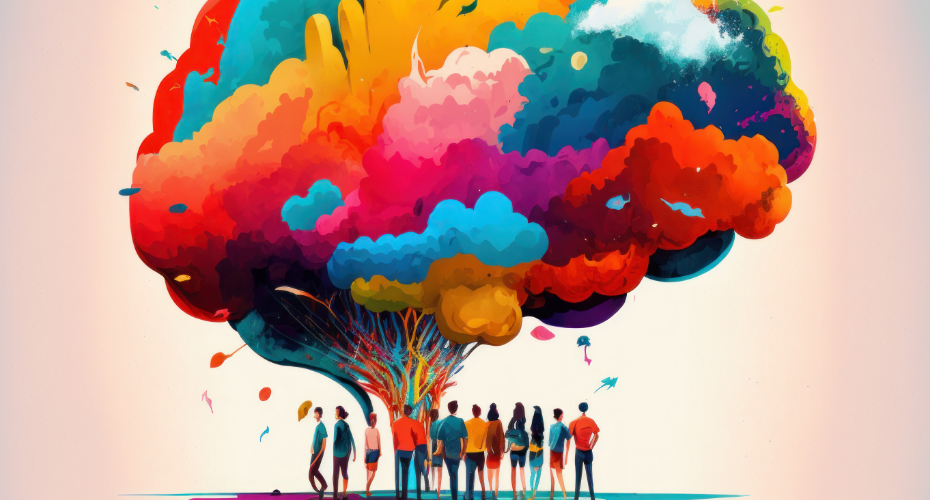
Customer Experience & User Experience: Where they Meet

This blog, co-written with Richard Alvarez (UX Practice Lead, Apexon), draws on their joint experience in the CX and UX environments.
Ask the average person if the customer experience and user experience are the same, and you will likely get either a tacit agreement or a confused shrug. If you asked the same question to someone immersed in the tech world, your hopes of a definitive answer might be dashed, mainly because there is a common misconception that there is no difference between the two.
Look under the hood of both customer experience (CX) and user experience (UX), and it becomes clear that they are similar but different. Not only in what they are designed to do, but also how they behave as a business optimization strategy for end user engagement. There is an argument that user experience is part of the whole customer experience, but companies aiming to deliver great products need to understand both journeys for their target customers.
With that in mind, let’s take a deeper dive into the two digital deliverables and focus on some of the usual questions that they inevitably generate.
User Experience is…
According to ISO 9241-210, UX can be defined as “a person’s perceptions and responses that result from the use or anticipated use of a product, service or product,” a rather simple description which basically related to the “emotions, beliefs, preferences, perceptions, physical and psychological responses, behaviors and accomplishments that occur before, during and after use.”
To put it into plain English, UX is how the end-user interacts with the company, its services, and its products in a single channel, be it digital, print, or traditional media.
We all know that a great experience meets the customers’ exact needs with such simplicity and elegance in a way that it’s a joy to either use or own that product, but the simplicity of that concept hides the need to understand what makes that experience great. And while the user interface (UI) is an integral part of the design, the UX is different from the UI.
Nielsen Norman Group (NN/G) explains this difference with an example of a movie review website. That website will have a plethora of reviews, some good, some bad. Even if the UI for finding a film is perfect, the UX will be inadequate for people who want information about a minor independent release if the underlying database only contains movies from the major studios.
To make things slightly more complicated, UX is often confused with usability. A misconception that just muddies the waters. In fact, NN/G defines usability as a quality attribute of the UI, highlighting whether the system is easy to learn, efficient to use, pleasant, and so forth. When you throw usability into the mix, it means that total user experience is an even broader concept.
So, What’s Customer Experience?
CX is an umbrella concept that includes all the channels and products where a customer both interacts with the brand and how the customer feels about the brand.
For the most part, this is related to cognitive, effective, sensory and behavioural responses that occur along the various touchpoints in the product lifecycle. Companies usually measure these responses during what is known as the consumption process – the pre-purchase, consumption and post-purchase stages, for instance – and they are all directly linked to the cumulative impact on the customer over the course of these defined and multiple touchpoints.
Think about the customer experience for a MedTech product. The CX will include a wearable device, a companion mobile app and a web dashboard. If one of more of these products fail to provide the end user with the experience that they want (or were expecting), then the CX will be impacted.
For that reason alone, an organization seeking to optimize the users’ experience with their brands must focus on the CX design as a primary goal. The end user experience typically is a journey with many touchpoints, and a good CX design team considers, assesses and optimizes all those touchpoints.
As we noted above, CX refers to how users perceive a product, system or service. From a company perspective, these can be slotted into the following categories:
- Customer service
- Advertising
- Brand reputation
- Sales process
- Fairness of pricing
- Product delivery
- Even each individual product’s UX
A CX consultant has a defined goal to hit, namely to dovetail business strategies with the actual customer’s overall experience … always keeping the customer’s overall happiness in mind.
Why these Differences Matter
Although the terms “customer experience” and “user experience” have a vastly different outcome in terms of how the customer perceives and uses the product, an essential takeaway is that when it comes to giving the best experience to people, there are multiple levels of engagement and customer interaction. It will come as no surprise that each of them is equally critical for the overall experience.
For instance, NN/G thinks about CX across three distinct levels: single-interaction, journey and relationship.
The interactions between a person and a brand can occur over a period of years (which, in some cases, might be a lifetime), so it becomes clear that you need to look at all aspects of that experience and how it impacts that person’s decision making. In today’s connected society, those interactions are mainly digital.
The single-interaction level reflects the experience the person has using a single device to perform a specific task.
This level is the one most commonly identified as the user experience. As a result, the focus of this interaction is mainly at the UX level, with companies seeking to design a simple interaction such as performing a small task on the website or an application. For the record, most UX designers work at the interaction level.
One thing to note, however, is that there are notable examples of physical channels at the interaction level – customer support on the phone, transaction with a teller at a bank, to name but two. Granted, most UX and CX experiences are considered to be digital, but we should never forget that the bricks-and-mortar experience may have a direct impact on the virtual.
The journey level captures the person’s experience as he/she works to accomplish a goal (possibly using multiple interaction channels or devices to do so)
The journey level is the end-to-end process of a customer while completing their goal. To achieve this, the customer is likely to interact with multiple devices and brand-owned channels. This is often projected as the omni-channel approach that companies want to offer their customers.
The caveat is that delivering a first-rate journey-level experience is often tricky for companies, mainly because it requires significant effort to integrate the various channels and coordinate different elements for interaction-level design. Companies might experience a few unseen challenges, which include but are not limited to the following;
- Delivering consistent messaging across channels,
- Omnichannel experience,
- Brand continuity (cohesive look, feel, and tone of choice across interactions),
- Integrating the back-end technology to allow customers to move effectively between channels with continuity and seamless experience.
The relationship level refers to all the interactions between the person and the company throughout (no surprises here) the life of the customer relationship.
This is the complete customer experience level. At this point, brands focus on the customer’s actual (and potential) lifetime experience with the brand instead of a single interaction or a journey. And this is a holistic level where all possible interactions and journeys between the customer and the brand are considered and optimized.
For example, a software company would design their product in such a way that not only does it attract people to try it and purchase it, but it is also easier to troubleshoot, update and uninstall (in the rare case when customers want to). We don’t really want to highlight one brand or company, but that is the platform on which Apple built its success.
CX and UX, Working Together
User experience is an essential part of the overall customer experience. As the goal of both is customer satisfaction, CX and UX must work together to deliver the best possible experience to the customer.
Companies will benefit when they understand how vital the relationship between the CX and UX is to their overall success. Customers tend to pay more when they have a good relationship with a company with an amazing product, with a recent Forrester research report citing the fact that people were willing to pay up to 4.5 times more for a great customer experience as opposed to an average one.
In fact, a good UX should improve overall CX. Aggregating customer feedback, for instance, can be leveraged to improve on the UX, since the brands can quickly improve product and customer experience based on the input from end users. A great UX also helps companies to not only combine the right number of channels but also present them in the proper context, an approach that essentially allows brands to offer a multi-device experience.
A modern shopping experience might begin online with search, move to social media, then a visit to the store (either online or in-person) before a buying decision is made. At every touchpoint on this journey, brands want the shopping experience to be simple, clear, and joyful. UX works to improve the overall CX by making improvements to a single channel experience, by drawing on an understanding of the customer journey and the part it plays in the larger digital ecosystem.
Why UX and CX are Critical
With customer and user experience so important to brand reputation and customer loyalty, it seems churlish to say that that companies that fail to provide either one, the other or (in some cases) both, will experience pain points and a decline in their overall business’ success.
A good CX enhances brand loyalty, but the UX must align with business optimization strategies. More importantly, the latter must deliver the subjective interactions that will influence the entire journey and not just a single point in time.
And while CX is an umbrella under which companies can add both UX and UI, it is critical to understand that all three are equally crucial to the overall success of a product, system or service. We all know that a happy user is a happy customer, and that is an emotional state that can be directly linked back to effective CX and UX.
Want to know how to alleviate your CX and UX pain points? We can help transform your toughest challenges, so contact us today. Alternatively, so please let us know what you need by using the form below.




